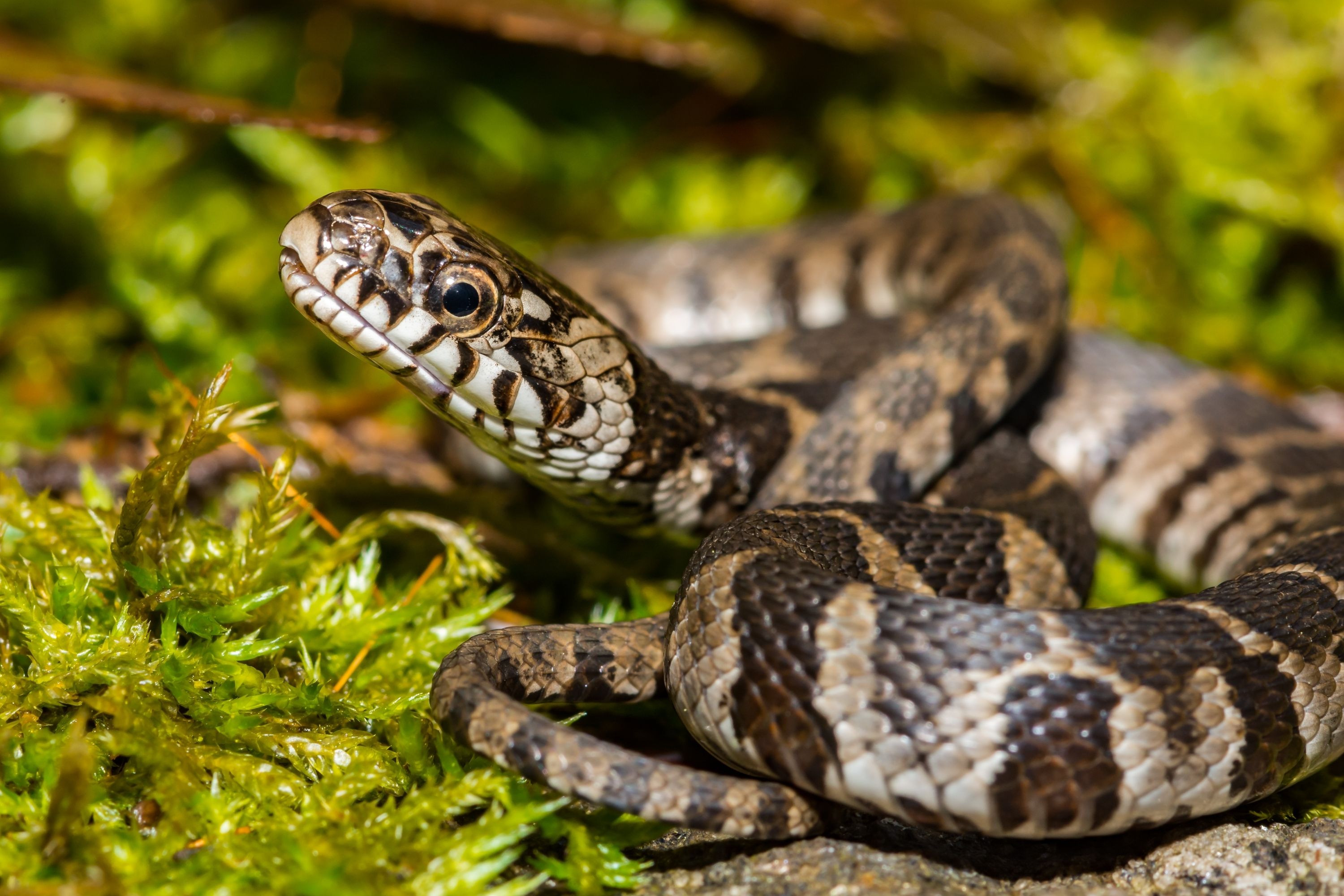Common watersnake
(Nerodia sipedon)

Description
The common watersnake (Nerodia sipedon) is a species of large, nonvenomous, common snake in the family Colubridae. The species is native to North America. It is frequently mistaken for the venomous cottonmouth (Agkistrodon piscivorus). The common watersnake can grow up to 135 cm (4 ft 5 in) in total length (including tail). Per one study, the average total length of females was 81.4 cm (2 ft 8 in), while that of males was 69.6 cm (2 ft 3+1⁄2 in). From known studies of this species in the wild, adult females can weigh between 159 and 408 g (5+1⁄2 and 14+1⁄2 oz) typically, while the smaller male can range from 80.8 to 151 g (2+7⁄8 to 5+3⁄8 oz).The largest females can weigh up to 560 g (20 oz) while the largest males can scale 370 g (13 oz). N. sipedon can be brown, gray, reddish, or brownish-black. It has dark crossbands on the neck and dark blotches on the rest of the body, often leading to misidentification as a cottonmouth or copperhead by novices. As N. sipedon ages, the color darkens, and the pattern becomes obscure. Some individuals become almost completely black. The belly also varies in color. It can be white, yellow, or gray; usually, it also has reddish or black crescents. The common watersnake is nonvenomous and harmless to humans, but superficially resembles the venomous cottonmouth. It is often killed by humans out of fear; killing snakes greatly increases the chance of being bitten. The two can be easily distinguished: the watersnake has a longer, more slender body and a flattened head the same width as the neck, round pupils, and no heat-sensing pits. The cottonmouth has a fatter body, a wedge-shaped head with prominent venom glands that are wider than the neck, cat-like pupils, and heat-sensing pits between the eyes and the nostrils. Colubrid snakes also have flat scales on their heads, while vipers all possess smaller, rugose scutes. Muskrat houses and beaver lodges are good places to find the common watersnake, which likes to hide among the sticks and plant stems. N. sipedon lives near lakes, ponds, marshes, rivers, and canals. N. sipedon has many predators, including birds, raccoons, opossums, foxes, snapping turtles, other snakes, and humans. The common watersnake defends itself vigorously when threatened. If picked up by an animal or person, it will bite repeatedly, and release excrement and musk. Its saliva contains a mild anticoagulant, which can cause the bite to bleed more, but poses little risk to humans.
Taxonomic tree:







